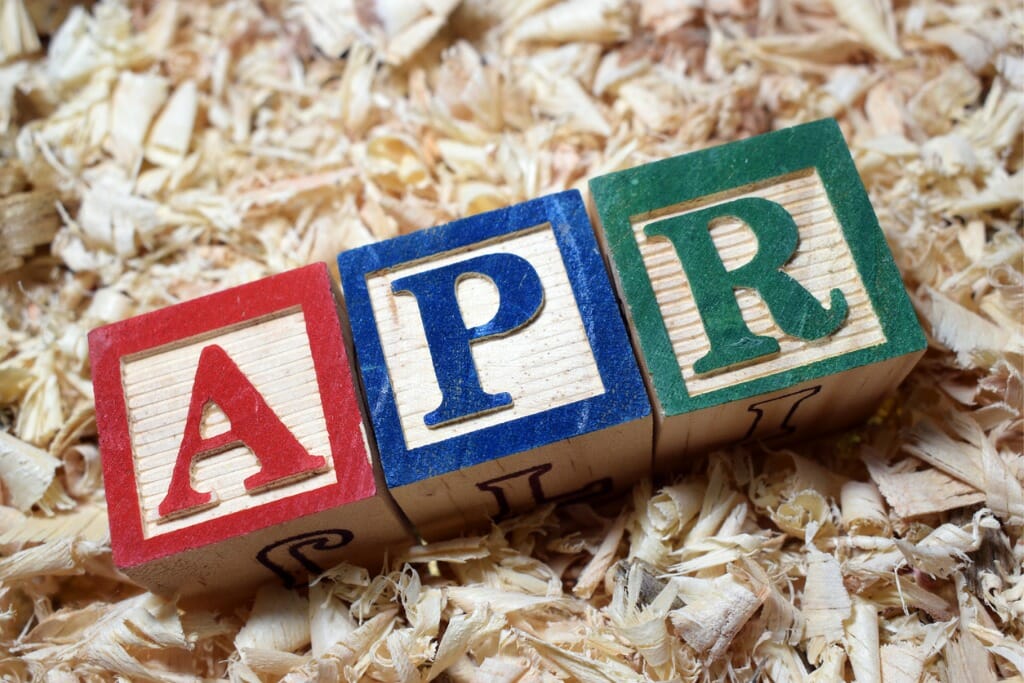When you’re buying a home, a lot of pieces have to fall into place. You may come across unfamiliar terms, like escrow and title insurance. One such term is mortgage APR or annual percentage rate. Knowing how to get a good APR can save you thousands of dollars. Here, we’ll cover what mortgage APR is, how it’s different from interest rates and other things you need to know about extra mortgage fees. A financial advisor can help you integrate your home purchase into a holistic financial plan tailored to your needs and goals.
What Is Mortgage APR?
The annual percentage rate (APR) represents the total cost of your mortgage as a percentage throughout the year. It comprises your interest rate as well as the cost of discount points and mortgage fees. All lenders are regulated by the Consumer Finance Protection Bureau (CFPB) and the CFPB enforces the Truth in Lending Act, or TILA. Part of TILA requires all lenders to list the APR when advertising rates.
How Is Interest Rate Different Than APR?

Interest rates, or more specifically, mortgage rates, are part of the costs lenders charge to borrow. These rates are set in accordance with the federal funds rate, which is a tool the Federal Reserve uses to encourage or discourage lending.
While the interest rate is part of the cost lenders charge, APR is more encompassing. It includes the interest rate, but it also incorporates other costs of lending. Things like private mortgage insurance (PMI), closing costs and other fees are wrapped into the APR.
Is It Better to Have a Lower Interest Rate or APR?

In general, APRs are always higher than interest rates. That’s because they include interest rates in their costs. The smaller the difference between an APR and an interest rate, the fewer additional costs you’re paying. This can be good in terms of fees, but if you’re hunting for a lower interest rate, you may need to pay for discount points or other mortgage fees.
Discount Points and Other Mortgage Fees
Now that we’ve covered how interest rates make up a component of APR, let’s talk about some of the other parts of APR. These include discount points, origination fees and PMI.
What Are Mortgage Discount Points?
Mortgage discount points are an upfront fee you pay to your lender to lower your mortgage rate. To lower your interest rate by 0.25%, you’ll pay 1% of your loan. So, if your mortgage is $300,000 at a 5.5% interest rate, paying $3,000 will bring your interest rate to 5.25%.
Although they’re reflected in your APR, you pay for discount points at closing. If you plan on living in your home for a while, buying discount points means you’ll pay less in interest over the loan, saving you money. However, if it’s a home you plan on selling in five to 10 years, you may not recoup the upfront costs of the discount points.
What’s an Origination Fee?
An origination fee is a cost your lender charges for processing and underwriting your mortgage. This fee usually costs 0.5%-1.5% of your mortgage. For a $300,000 mortgage, an origination fee would range between $1,500 and $4,500. Like discount points, these are also charged at closing.
Some lenders don’t charge origination fees, which can seem great on the surface. However, these loans often come with higher mortgage rates. That means that if you stay in the home for the length of the loan, you’ll probably end up paying significantly more in interest than the upfront fee would cost. However, if you’re planning on selling within five to 10 years, lower upfront fees with a higher interest rate could save you money.
What’s Private Mortgage Insurance (PMI)?
Not to be confused with homeowners insurance, PMI is a cost that lenders add to conventional mortgages when the down payment is less than 20%. So, on a $300,000 mortgage, you’ll need $60,000 down to avoid PMI. If you’re paying PMI, you can request your lender to remove it from your bill once you hit 20% equity.
Typically, PMI ranges from 0.1% to 2% of your loan annually. It’s included with interest on your monthly payment. For a $300,000 mortgage, that’s between $300 and $6,000 annually, or $25 and $500 a month. As you can see, it’s a wide range dependent on a lot of factors, so it pays to shop around.
Bottom Line
Mortgage APR is an annual percentage that reflects all of the costs to acquire the loan. Your mortgage interest rate makes up a big part of your APR. Other costs include discount points, mortgage origination fees and PMI. Remember that interest rates are only part of the total costs of a mortgage. In general, if you’re staying in the home for the long term, paying some upfront fees for a lower interest rate makes sense. But if you’re going to move within a decade, it may be smarter to pay fewer fees upfront.
Tips for Home Buyers
- Home buying is a huge task and juggling all the costs and fees can be intimidating. A financial advisor can help. Finding a financial advisor doesn’t have to be hard. SmartAsset’s free tool matches you with up to three vetted financial advisors who serve your area, and you can interview your advisor matches at no cost to decide which one is right for you. If you’re ready to find an advisor who can help you achieve your financial goals, get started now.
- Getting a good rate is crucial to buying a home. Use SmartAsset’s free mortgage comparison tool to compare mortgage rates from top lenders and find the one that best suits your needs.
- If you’re having a hard time securing a conventional mortgage, look into a government-backed mortgage, such as an FHA loan, VA loan or USDA loan.
Photo credit: ©iStock.com/deepak venkatesh, ©iStock.com/svetikd, ©iStock.com/PeopleImages
